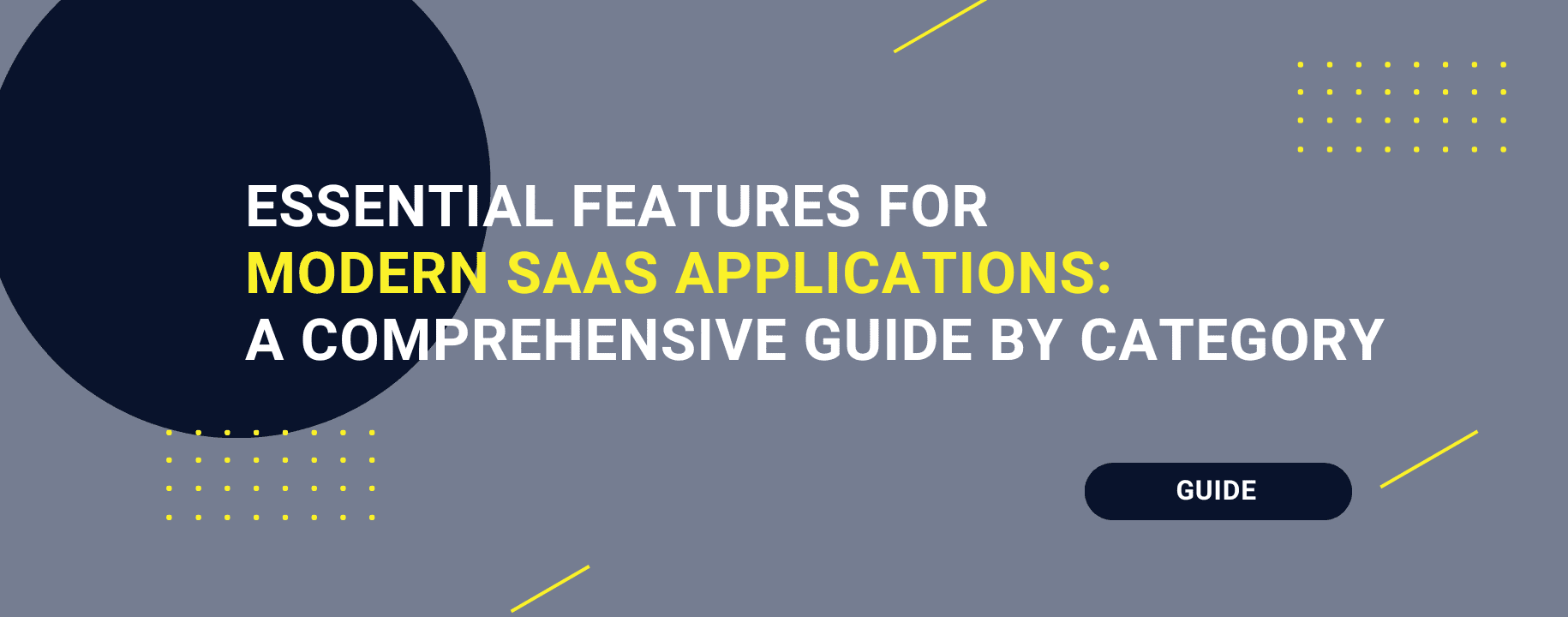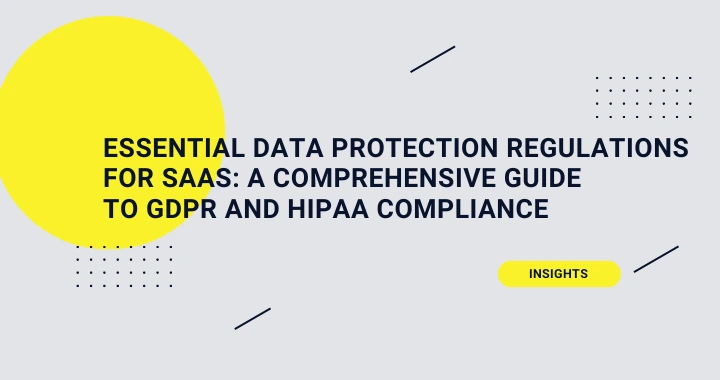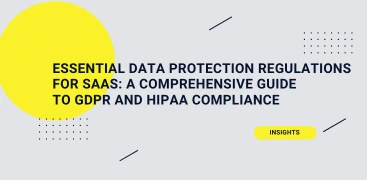- Industry insights
- 14 Feb 2025
Essential Features for Modern SaaS Applications: A Comprehensive Guide by Category
Explore the essential features for SaaS applications in our guide! Learn about the key functionalities that your SaaS platform should have!



Table of contents
- Introduction
- What is a SaaS Application?
- Key Parameters of a Successful SaaS App
- Essential Architectural Components Every SaaS Application Needs
- Categories of SaaS Applications and Their Key Features
- Real-World Examples of SaaS Applications
- Common Pitfalls to Avoid When Building a SaaS Application
- Conclusion
Contributors

Introduction
Did you know that by 2025, 85% of business applications are expected to be SaaS? (BigOhTech, 2025). Yes, it is true. And that’s because SaaS solutions offer flexibility, scalability, and low costs, eliminating the need for complex IT infrastructures. If you’re looking for the best solutions for your business, it’s important to understand the key features that make a Saas application successful.
Find out everything you need to know about SaaS applications in our guide, including what they are, their essential parameters, types and features, and the architectural components required for their success.
What is a SaaS Application?
A SaaS application, as its name – Software as a Service – suggests, is a service that provides you with the software you need. This type of application does not need to be installed on your computer, as the software is hosted on an external system, and you access it directly through an online platform, from any device with an internet connection.
SaaS applications are also known as Web-based software, On-demand software, and Hosted software. There are two main types of architecture for them:
- Horizontal SaaS applications: These apply to a wide range of industries and they can be used by any type of business (e.g.: Mailchimp)
- Vertical SaaS applications: They are created specifically for a particular industry, offering solutions that are tailored to the type and nature of that niche.
Key Parameters of a Successful SaaS App
In developing a successful SaaS application, some important parameters need to be taken into account from the very early stages. These factors influence the performance of the application and, implicitly, the long-term success of your business.
1. Scalability: as your business grows, so should your app. Start early with a flexible architecture that can support multiple users or additional requirements without slowing down performance. Always have the future of your business in mind.
2. Security: nobody wants to deal with an unsafe app. Plan solid security measures from the start, such as authentication or encryption, to keep your users safe.
3. Integration: the application should be able to work easily with other existing applications. Plan integration with external systems at the earliest stage, to avoid bottlenecks and save time in the long run.
4. Cost: even though SaaS applications are affordable (some are even free!), costs can increase as your business grows. Plan a pricing model that allows for gradual scaling and helps you control expenses as you add functionality.
Discover our SaaS Consulting & Development Services tailored for founders, product owners, and CTOs.
Essential Architectural Components Every SaaS Application Needs
We have summarized in the following table the essential components of a successful SaaS architecture:
| Component | Description |
| Frontend (UI) | The user interface through which users interact with the service (e.g., web app). |
| Backend | Handles business logic, data processing, and integrates with databases. |
| Databases | Stores user data, application settings, and other relevant information. |
| APIs/ Integration | Enables communication between different services and external applications. |
| Authentication & Authorization | Manages user accounts, login systems, and access permissions. |
| Scalability Systems | It ensures that the app can work well even with multiple users. |
| Security | Protects your data and application from possible attacks and data loss. |
| Monitoring & Logging | Tracks application performance and helps resolve technical issues. |
Categories of SaaS Applications and Their Key Features
CRM (Customer Relationship Management)
Do you run a business in sales, financial services, e-commerce, or even healthcare? CRM software helps you keep all your customer data and interactions in one place, optimizing your processes to the fullest.
Implementation considerations:
- Choose a platform that can integrate data from multiple sources (marketing, sales, support) and has a clear and easy process for migrating data from old systems.
- CRM adoption by teams can be difficult if they are not familiar with the platform. Make sure that the team receives training to understand how to use the system and that the implementation is done gradually to avoid confusion.
Project Management
Project management platforms like Trello, Jira, or Redbooth help teams organize their tasks, supporting businesses with task distribution and resource management. Users can create projects, assign tasks, and constantly monitor their progress.
Implementation considerations:
- Managing a large number of tasks and projects can become chaotic. Use a visual system to visualize the progress of each task, such as Kanban boards.
- Also, a lack of good communication between teams can lead to confusion. A solution here is to integrate communication tools like Slack with your project management platform, to centralize all discussions and files.
Marketing Automation
Marketing Automation tools help businesses automate their marketing processes, such as sending emails or posting on social media. The most popular in terms of email automation is Mailchimp. Marketing automation helps you save valuable time and personalize messages to customers based on their buying behavior.
Implementation considerations:
A challenge that can arise is that data may not sync properly between your CRM and marketing platform, so make sure you choose platforms that integrate well with each other.
CMS (Content Management System)
Want to build a website without the need for developers? You’ve probably heard of WordPress before. WordPress is nothing but a CMS that allows you to create and manage your website without coding skills.
Implementation considerations:
- If the site is updated frequently, security risks can appear. Choose a CMS that has automatic updates and make sure you use security solutions such as daily backups and protection against attacks.
- As your site grows, managing large volumes of content can become difficult. Use hosting solutions that offer scalability and opt for caching to improve site speed.
Real-World Examples of SaaS Applications
| Category | Examples |
| CRM | Salesforce, HubSpot, Zoho CRM, Microsoft Dynamics 365, Pipedrive, Freshsales |
| Project Management | Trello, Asana, Monday.com, Jira, Basecamp, ClickUp, Wrike, Redbooth |
| Marketing Automation | HubSpot, Mailchimp, Marketo, ActiveCampaign, Pardot, GetResponse |
| CMS | WordPress, Joomla, Drupal, Wix, Squarespace, Shopify, Ghost |
Common Pitfalls to Avoid When Building a SaaS Application
Feature Bloat
The most common trap is assuming that more functionality automatically translates to better outcomes for your users and your business. Although we all want to enhance our product with as many features as possible, a “less is more” approach often works better when it comes to practicality and usability. It’s more important to keep in mind the needs of your users and to provide exactly the functionality they need, as an application cluttered with unnecessary functionality can lead to confusion, making the platform less intuitive and harder to navigate.
Insufficient Understanding of the Market
Before you launch, make sure you’ve done detailed research on your audience and your competitors to understand user needs, wants, and behaviors. A well-done research will allow you to adjust the features of your SaaS app to better meet market demands.
Ignoring Scalability
If your app goes viral (and we all hope it does), it should be able to handle the surge in demand. Make sure your app can scale seamlessly, regardless of how many users it attracts.
Conclusion
In conclusion, if you want your SaaS application to be successful:
- focus on key parameters such as scalability, security, and efficient integration.
- avoid common pitfalls, such as excess functionality or lack of proper market research
- prioritize user experience by offering a simple, intuitive interface that meets their needs.
Start building your successful SaaS application now! Get a free estimate for your customized solution and get ready to transform your business! Find out more about our SaaS consulting services here.
The CTO Insights Initiative | Felix Crisan – Netopia
Retention Engineering: Data-Driven Strategies to Reduce Churn in SaaS Products
Designing for Conversion: UX Principles That Transform SaaS Trial Users Into Paying Customers